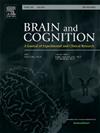提供另一种解释可以提高对错误信息的拒绝,并改变真实性判断过程中与事件相关的潜力
IF 1.4
3区 心理学
Q3 NEUROSCIENCES
引用次数: 0
摘要
错误信息的持续影响效应(CIE)发生在错误信息在纠正后仍然影响记忆和决策的情况下。在这里,我们研究了错误信息的纠正和随后的真实性判断背后的神经认知过程。利用脑电图(EEG),我们检测了事件相关电位(ERPs):更正编码期间的P300,以及随后准确性判断期间的P300和FN400。我们比较了三种情况下的erp:撤回的错误信息(仅撤回),撤回的错误信息提供了正确的替代原因(撤回+替代),以及后来确认的真实信息(确认)。结果表明,替代方案显著降低了CIE。在真实性判断中,撤稿+备选条件比仅撤稿条件表现出更高的P300,这表明如果存在备选解释,当再次遇到错误信息时,记忆过程会更丰富。与确认条件相比,单纯撤回条件和撤回+替代条件均能诱发更低的负性FN400,表明错误信息的概念加工流畅性更高。此外,我们还发现,当编码撤回和替代原因时,在撤回+替代条件下,更高水平的P300与准确性判断准确度的提高有关。总之,这些发现表明,当提供纠正错误信息的另一种原因时,回忆和编码过程都有助于降低CIE。本文章由计算机程序翻译,如有差异,请以英文原文为准。
Providing an alternative explanation improves misinformation rejection and alters event-related potentials during veracity judgements
The continued influence effect of misinformation (CIE) occurs when misinformation affects memory and decision making even after correction. Here, we examined the neurocognitive processes underlying the correction and subsequent veracity judgements of misinformation. Employing electroencephalography (EEG), we examined event-related potentials (ERPs): the P300 during encoding of corrections, and the P300 and FN400 during subsequent veracity judgement. We compared ERPs between three conditions: misinformation that was retracted (retraction only), misinformation that was retracted with a correct alternative cause provided (retraction + alternative), and true information that was later confirmed (confirmation). Results showed that alternatives reduced the CIE significantly. During veracity judgements, the retraction + alternative condition exhibited a higher P300 than the retraction only condition, suggesting enriched recollection processes when re-encountering misinformation if an alternative explanation existed. In contrast, both retraction only and retraction + alternative conditions elicited a less negative FN400 compared to the confirmation condition, suggesting higher conceptual processing fluency of misinformation. Moreover, we found that greater levels of P300 when encoding retraction and alternative causes in the retraction + alternative condition were associated with improved veracity judgement accuracy. Together, these findings suggested that when providing an alternative cause in correcting misinformation, both recollection and encoding processes contributed to reduced CIE.
求助全文
通过发布文献求助,成功后即可免费获取论文全文。
去求助
来源期刊

Brain and Cognition
医学-神经科学
CiteScore
4.60
自引率
0.00%
发文量
46
审稿时长
6 months
期刊介绍:
Brain and Cognition is a forum for the integration of the neurosciences and cognitive sciences. B&C publishes peer-reviewed research articles, theoretical papers, case histories that address important theoretical issues, and historical articles into the interaction between cognitive function and brain processes. The focus is on rigorous studies of an empirical or theoretical nature and which make an original contribution to our knowledge about the involvement of the nervous system in cognition. Coverage includes, but is not limited to memory, learning, emotion, perception, movement, music or praxis in relationship to brain structure or function. Published articles will typically address issues relating some aspect of cognitive function to its neurological substrates with clear theoretical import, formulating new hypotheses or refuting previously established hypotheses. Clinical papers are welcome if they raise issues of theoretical importance or concern and shed light on the interaction between brain function and cognitive function. We welcome review articles that clearly contribute a new perspective or integration, beyond summarizing the literature in the field; authors of review articles should make explicit where the contribution lies. We also welcome proposals for special issues on aspects of the relation between cognition and the structure and function of the nervous system. Such proposals can be made directly to the Editor-in-Chief from individuals interested in being guest editors for such collections.
 求助内容:
求助内容: 应助结果提醒方式:
应助结果提醒方式:


